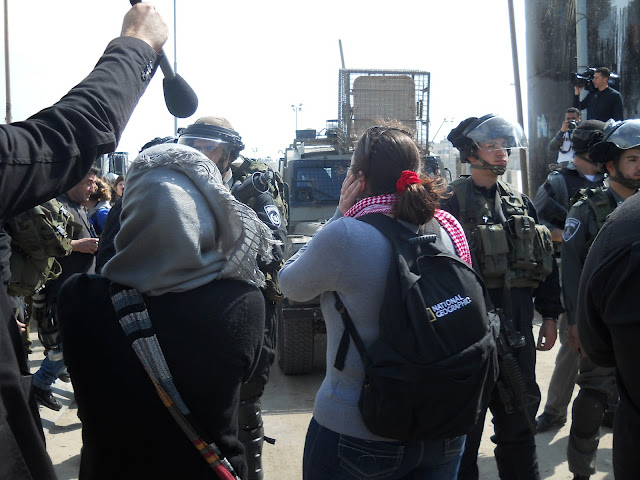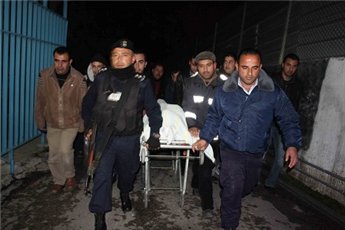Tag: Qalandia
-
Women’s day demonstration in Qalandia for the rights of female Palestinian prisoners
by Satu 8 March 2012 | International Solidarity Movement, West Bank On International Women’s day, March 8th, hundreds of demonstrators rallied in Qalandia in solidarity with hunger striker Hana Shalabi and calling for Israel to end the occupation. The demonstrators marched marched down the street next to the separation wall to Qalandia checkpoint, carrying placards…
-
Protester shot and killed at a demonstration at Qalandya checkpoint today, clashes continue in Jerusalem and the West Bank
25 February 2012 | Palestine News Network During a violent protest in which the IOF used live bullets, tear gas and rubber bullets, twenty five year old Talat Ramia, was shot in the shoulder and died later from his injuries. According to medics, five other protesters were injured. An Israeli army spokesman said the incident…
-
In Photos: The construction of segregation
by Jenna Bereld and Samar 16 December 2011 | International Solidarity Movement, West Bank Today, Israeli soldiers once again denied the Palestinians’ right to assemble and protest against the construction of the illegal separation wall. About fifty villagers of Qalandia gathered after the Friday prayer and went to the construction site in a peaceful demonstration.…



